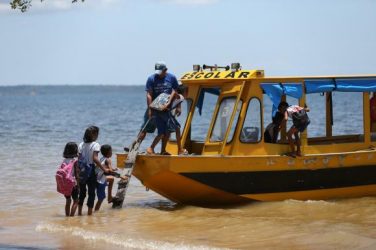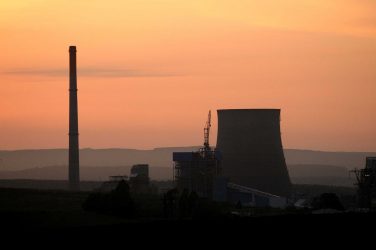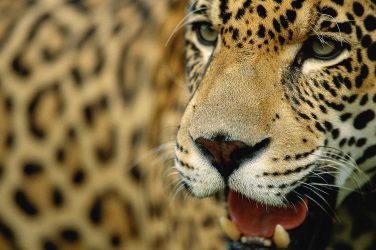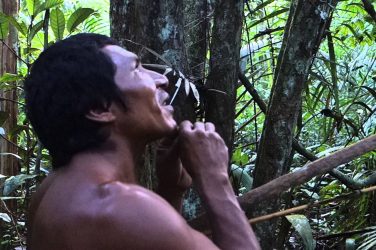The Brazilian government has earmarked a vast tract of Amazonian land for mining. The so-called “Renca” reserve sits in the last great wilderness area in the eastern Amazon and contains lots of unique rainforest wildlife.
The controversial decision to allow mining has since been rewritten to clarify that development cannot take place on indigenous lands that lie within the “Renca”, and then put on hold by a federal judge, pending support from congress.
Protected areas such as the Renca are under threat right across the Amazon, and many have already been downsized or downgraded.
Conservation is undermined by chronic underfunding of the national environmental protection agencies, the devolving of environmental enforcement to regional states that cannot cope, and by rural violence so severe that Brazil leads the world in assassinations of environmentalists.
The result of all this is an Amazon where 90% of logging is illegal and deforestation is increasing, where unprecedented wildfires burn each summer, and where large vertebrates are now going extinct for the first time since the Pleistocene.
Brazil says mining and logging will boost national economic growth. Yet people in the Amazon remain some of the poorest and most marginalized in South America, and there is little evidence this kind of development has enhanced their quality of life.
For example, the municipalities of Eldorado do Carajás, Marabá, and Paraupebas, all of which surround large mining operations, have a human development index lower than that of Libya, a country stricken by civil war.
And the construction of the controversial Belo Monte dam resulted in the regional capital of Altamira attaining the highest per capita homicide rate in all of Brazil, equivalent to 25 murders a day if scaled to a city the size of London.
Why has development failed Amazonians?
First, the companies driving the change are generally big multinationals based either in and around Rio and São Paulo (1,700 miles away) or abroad. Despite some municipal taxes, only a tiny portion of the profits remain locally.
Development, as currently practiced, also favors the wealthy over the poor. When protected areas are downgraded the chief beneficiaries are landholders who are able to log or mine their territory.
Other social groups aren’t so lucky. Some are even actively attacked – either directly, as occurred in the assassination of ten landless movement squatters in a large Amazonian farm, or through legal changes, such as the downgrading of the rights of Quilombolas, historical communities descended from African slaves, and indigenous peoples.
Brazil’s ongoing “car wash” corruption scandal has led to allegations of worrying links between large development projects in the Amazon, such as the Belo Monte dam, and the diversion of state funds to political parties. If the purpose of development is political gain, there can be little hope for regional citizens.
Are there alternative ways forward?
Both Amazonian people and forests would benefit if we stopped evaluating development schemes solely in terms of the profits they could generate. This sort of narrow, economic assessment cannot truly capture the value of the Amazon’s forests: how do you put a price on conserving unique species, or mitigating global climate change?
The forests of the Renca are some of the most dense and slow-growing in the Amazon basin. Even deforesting just 30% of the area would effectively emit more than four billion tons of CO2 into the atmosphere – equivalent to Brazil’s entire fossil fuel emissions over the past ten years.
Unless climate change forms part of the decision making process in the region, Brazil will fail to meet its international commitments such as the Paris agreement.
Development must also secure constitutional rights for everyone, not just those of the elites. Brazil currently has so called “differentiated citizenship”, where in practice there is a gradation of rights among citizens, depending on their race, social class or region.
Local action is often the only defense against the expansion of mining or dams. Recent examples of a grassroots success include the Munduruku indigenous people, who are forcing various concessions by resisting megadams on the middle Tapajós River.
Another example is the practice of “counter-mapping” among indigenous peoples, which entails them mapping their own territorial boundaries to defend their land from industrial agriculture, mining, dams and logging.
These alternative approaches are the best way forward in the Renca too. Instead of opening up the area for mining multinationals, Brazil should recognize the rights of local people and empower them to lead decision-making.
Brazil nut harvesting is already big in the local economy and, along with ecotourism and carbon-payments (being effectively paid to not chop down a forest), could deliver sustainable development, while leaving the minerals in the ground.
Authors:
Jos Barlow
Professor of Conservation Science, Lancaster University
Alexander C. Lees
Lecturer in tropical ecology, Manchester Metropolitan University
Erika Berenguer
Senior Research Associate, University of Oxford
James Angus Fraser
Lecturer in Political Ecology, Lancaster University
Joice Ferreira
Researcher in Ecology, Federal University of Pará
This article was originally published in The Conversation. Read the original article here: https://theconversation.com/only-local-amazonians-can-bring-true-sustainable-development-to-their-forest-83326













